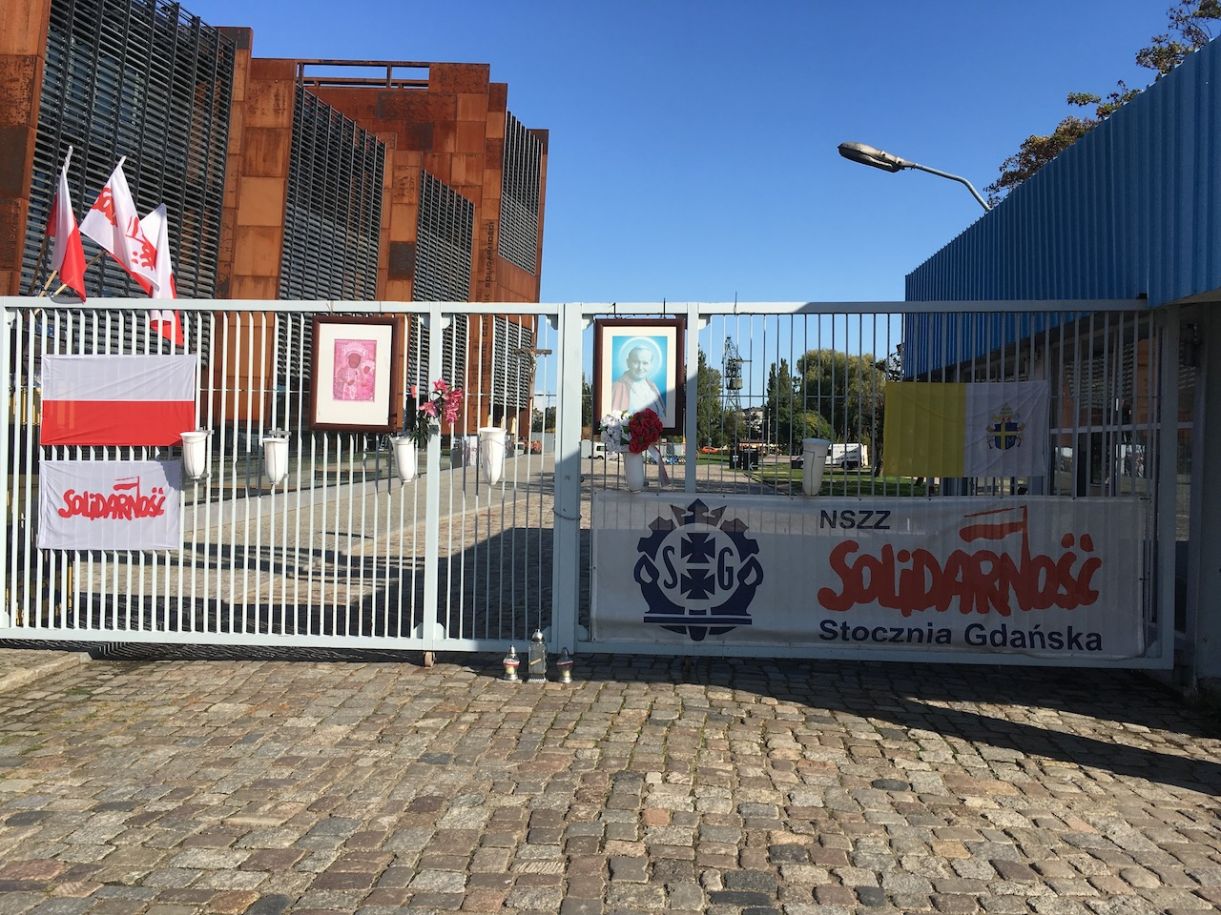Jarosław Żurawiński, President, Gdańsk Maritime Historical Foundation and Guide
A Tour Around the Gdańsk Shipyard
Gdańsk Shipyard, formerly Lenin Shipyard in Gdańsk, is the historic Polish shipyard located in the city of Gdańsk, Poland. A strike by more than 12,000 shipyard workers in 1980 led to the founding of, Solidarity (Solidarność), the first non-communist trade union in the Eastern Bloc countries. Led by shipyard election Lech Wałęsa, the strike was one of the first actions in a campaign of civil resistance, which contributed to the eventual collapse of communism in Poland.
So we can start outside at the entrance to the shipyard where there is the memorial The Monument to the Fallen Shipyard Workers of 1970. For the Polish people it is one of the most important post WW2 memorials. It is a testament to the strikers and the local people that this monument stands, as the government did not want to memorialize this event, where they killed at least 44 people. The monument is deeply connected to Catholicism. The crosses represent faith, the anchors represent hope, and the 10 boards represent the love of freedom and the Decalogue. The circles in the pavement surrounding the structure represent the circles that ripple out from throwing a stone into water. The stone representing freedom and the idea that freedom, like the ripples, is something that you cannot stop. The three tower-like structures represent the crucifixions at Golgotha. The technique of building the monument was the same as employed for building ships, intentionally reflecting the labor of the workers who were killed by the government troops.
The gate at the entrance to the shipyards represents the entrance to what was the largest shipyard in the world, measuring a total of 165,000 square hectors (63 square miles). It is not the original gate. A tank, destroyed the original gate in the 1980s, when the government was cracking down on strikers. This gate also marks where people died on Dec 16, 1970. Then, the strikers were protesting the high price increases of food. And for this they were killed.

The shipyard was a city within a city with streets, tramlines, even trains running through. However, the main mode of transportation was bicycle. It would take between 45 – 60 minutes to bicycle from one end of the shipyard to the other. There was a hospital, a post office, and a sports club, even a cinema. During the 1960s over 18,000 people worked here. To understand the shipyards as a place, one needs to know that there was a whole culture here that went beyond the production of ships, to know that people were living much of their lives here. It was common for three generations of people in the same family to be working here at the same time, a grandfather, a father and a son / grandson. Also, many husband and wives worked in different parts of the shipyards. People fell in love here, got married here, and had their children here in the shipyard hospital.
So, the shipyard was, in a way, a whole society. Thus, Solidarity was a cultural and social movement as much as a political one. Even people who didn’t work in the shipyards had family members who worked in the shipyards. It is because of this connection, where people were living, in a way, their whole lives at the shipyard that a movement like Solidarity could be created here in the 1980s.
This tour was conducted in English and Polish with aid from a translator.
Photographs by Janeil Engelstad